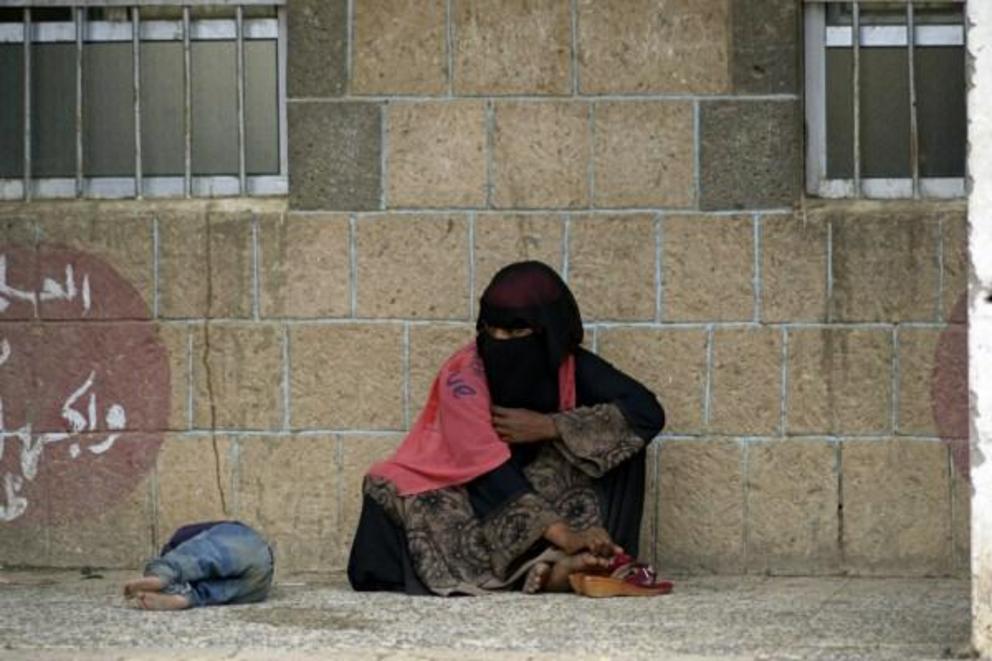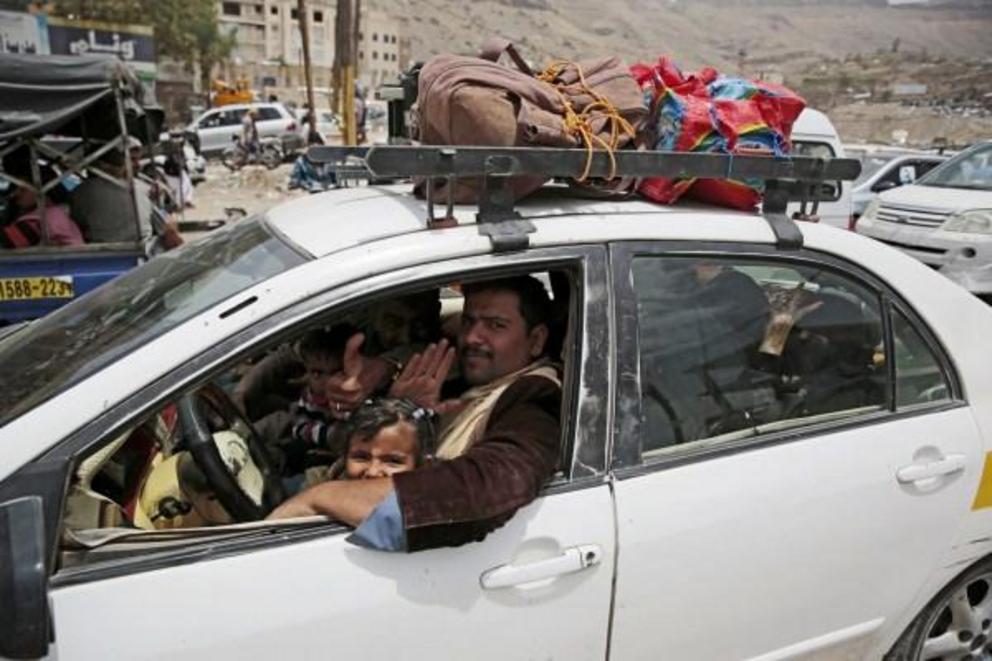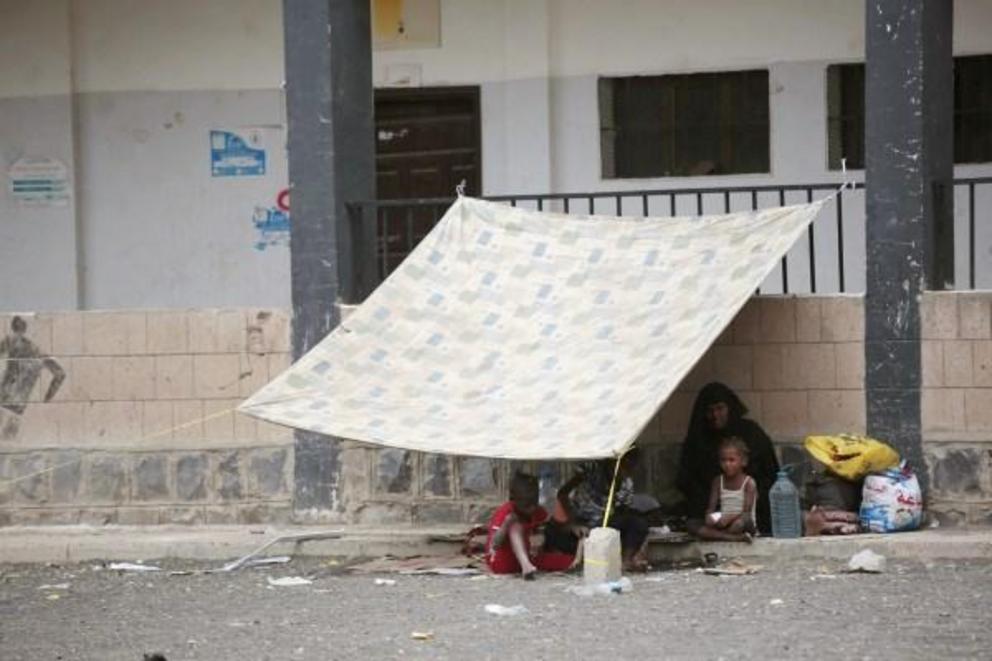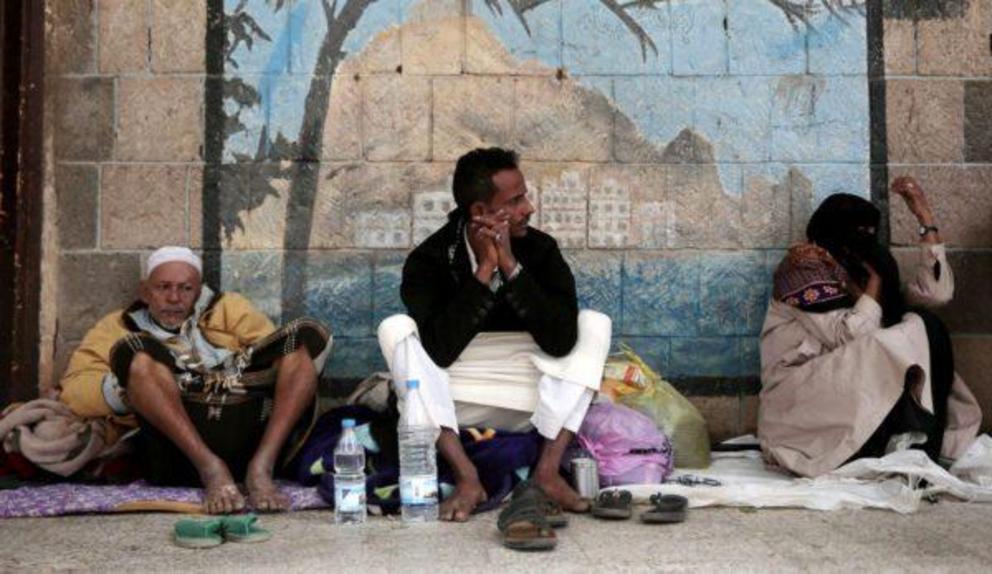Yemenis flee Saudi-UAE bombardment of Hodeida
...chaotic exodus and “nowhere to run”
Thousands of Yemenis have fled the port city of Hodeida amid a deadly Saudi/UAE invasion causing a mass exodus of internally displaced people already in the war.
HODEIDA, YEMEN — Mohammed Mousa, 31, has sharp wide eyes. Enthusiastic and angry, he shouts slogans against Yemen’s latest invaders while in the midst of a huge rally in Hodeida. Mousa was one of the thousands of Yemeni residents of the Tihamah region to take to the streets on Friday to protest the U.S.-backed Saudi coalition’s assault on their city. Carrying banners, Kalashnikovs, and Yemeni flags, they chanted lyrics from Yemen’s national anthem “my heartbeat shall remain that of a Yemeni … no foreigner shall ever hold dominion over Yemen.”
The protesters hold the United States responsible for crimes committed in the war and for the consequences of the U.S.-backed Saudi-coalition blockade, welcoming fighters from across Yemen who have descended upon Hodeida to help in the defense of their city. They also condemn the United Nations for its inaction, calling on it to shoulder its responsibility to protect civilians and to ensure the delivery of humanitarian assistance.
Mousa, who lives only 300 meters from the embattled Hodeida airport, is one the many residents of Tihamah who fled home days ago. Family in tow, he walked six kilometers, hiding behind walls and under trees to avoid Saudi airstrikes before finding shelter at a school inside the city.
“They told us that buses could not come in or out so we started walking, carrying our children and stopping every once in a while to rest while Apaches hovered above,” Mousa told MintPress. “We were scared; we saw dead bodies in al-Gharasi.” Six civilians, including four women, had been killed by an airstrike that targeted a bus full of displaced residents near al-Gharasi earlier that week.
“Now we’re in this school, no mattresses, no electricity, no water, no bathrooms, nothing, and we have children who need food and medicine” Mousa said, sitting on the floor of an empty classroom housing those displaced by Saudi and UAE attacks. Dozens of families have sought shelter in local schools, unable to secure assistance elsewhere thanks to a coalition blockade of the city’s port, the sole entry point for up to 80 percent of the country’s humanitarian aid.

A Yemeni mother and her child, displaced by a deadly Saudi/UAE invasion, sit in a school allocated for IDPs in Sanaa, Yemen, Jun. 23, 2018. Hani Mohammed | AP
UN High Commissioner for Human Rights Zeid Ra’ad al-Hussein has warned that the U.S.-backed Saudi-coalition attacks on Hodeida could endanger the lives of millions, forcing civilians to seek shelter in schools further away from the fighting. He added, “the Saudi and Emirati coalition’s ongoing attacks on Hodeida could cause enormous civilian casualties and have a disastrous impact on the life-saving humanitarian aid to millions of people, which comes through the port.”
They chose to die on their land
Just as al-Hussein warned, thousands of families have fled the intense fighting near Hodeida’s contested airport, as coalition forces ramp-up indiscriminate airstrikes in a bid to wrest control from Houthi forces. UAE Apache helicopters have been striking schools and homes in the neighborhood of Manzar abutting the airport and at least four civilians were killed and a girl injured when an airstrike targeted their home in the Hawk district, a neighborhood near the airport.
A family member, speaking on condition of anonymity, told MintPress:
They refused to be displaced from their home or farm, they preferred to die on their land instead of leaving it to foreign mercenaries.”
“What are we going to do now?”
Other residents in the area have fled to cities further from the fighting, seeking shelter inland in Sanaa, or northeast to the mountainous city of Hajjah. Days ago, Sanaa’s southern entrance, which links Sanaa to Hodeida, was packed with buses and cars fleeing Hodeida. Traffic was at a virtual standstill as cars — some packed with up to 20 people, mostly women and children — entered the city.
Samah, a 19-year-old resident of Hodeida, fled to Sanaa with 20 other displaced families, hoping it would be safer than Hodeida. “We didn’t have time to gather our clothes; we lived in hell in a school, and I knew warplanes would target us,” Samah told MintPress from behind a torn burqa. Samah lost her aunt and her aunt`s family when two Saudi airstrikes targeted a camp for internally displaced people in al-Hali on April 2, 2018, killing more than 20 refugees, mostly women and children.

Displaced Yemenis, who fled their homes amid a deadly Saudi, UAE invasion of the port city of Hodeida, arrive in Sanaa, Yemen, Jun. 23, 2018. Hani Mohammed | AP
Since March of 2015, when the U.S.-backed Saudi coalition began its military campaign against Yemen, several camps for the internally displaced have been targeted by coalition forces. Last July, at least 20 civilians, including women and children, were killed in a Saudi-coalition airstrike in the village of al-Atera in the Taiz province.
At the Abu Bakr Center for internally displaced people located in southwest Sanaa, men, women, and children stood in long lines under the blazing sun waiting to register their names before being transferred to schools in other regions. Anxious, exhausted and gripped by fear, they carry the few personal belongings they were able to secure before fleeing Hodeida.
There, a woman can be overheard telling her husband “our numbers are very large, what are we going to do now? I’m scared for my kids; we don’t even have blankets, maybe we’ll stay here tonight.” He replied simply, “God will help us.”
Abdul-Wahab al-Sharif, director of the National Commission for Humanitarian Affairs, told MintPress that as of Saturday about 300 families had reached Sanaa. “We have 47 centers for the displaced and only three of them are ready to receive people, with only simple accommodations.” Many of the displaced suffer from malaria, rashes, diarrhea and some are suspected to have cholera, but al-Sharif says there is no medicine or medical care: “We are already in a humanitarian crisis.”

A Yemeni mother and her children, displaced by a deadly Saudi, UAE invasion, sit in a school allocated for IDPs in Sanaa, Yemen, Jun. 23, 2018. Hani Mohammed | AP
No place to run
The suffering of Yemen’s internally displaced people is severe. Some have relatives in Sanaa and other places outside of Hodeida, but many do not, forcing families to seek shelter in small makeshift tents inside of unfinished buildings, on the edges of roads, and sometimes even in waste dumps.
Most of them spend their time begging for food in the street, oftentimes relying on remnants of bread and rice to satisfy their children’s hunger. As the situation continues to deteriorate, most are unable to find jobs or secure a regular source of income.
Others, deciding their prospects are bleak anywhere they go, have entrenched themselves in their homes. Sauad, a 50-year-old mother of six living in Hodeida, has been unable to flee her home. Her husband died from cholera last year and she now faces constant bombardment, a lack of clean water, and power cuts. She told MintPress,
We have lived in a state of terror for three days because of the warplanes and Apaches. We couldn’t escape, I have children and no place to run. We haven’t even had water for 28 hours.”
Source: www.mintpressnews.com

